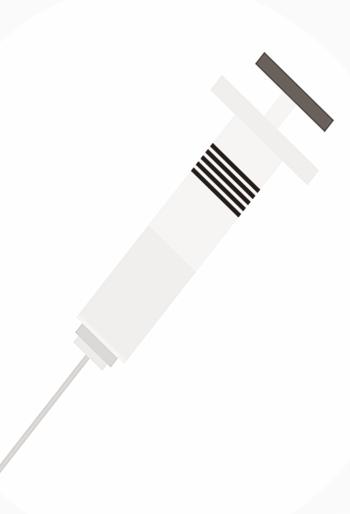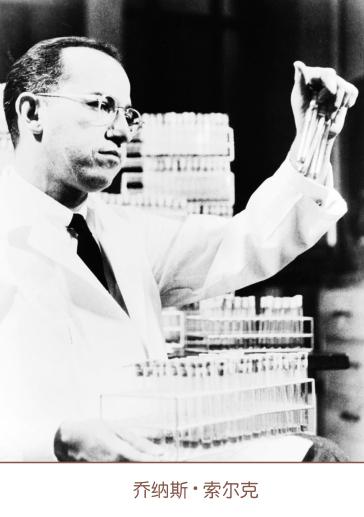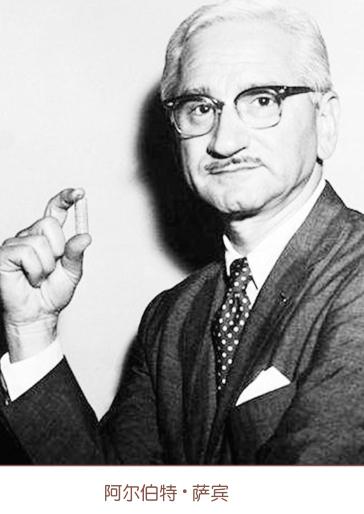向实验室的“白大褂”英雄们致敬
2018-12-19ByBobGreene
By Bob Greene

These are times when the cult of celebrity seems especially empty, when our national love affair with multimillion-dollar shortstops and with beautiful actresses whose flawless faces are enough to guarantee huge box-office weekends feels devoid of meaning.2
However, every time severe epidemics break out, the world will rush to turn its pleading eyes in the direction of men and women whose names and faces we dont even know.3
They are the men and women who, wearing lab coats in medical and scientific facilities, are working—as they do every day—toward the conquest of disease. The wider world seldom gives them a thought until suddenly we realize that we need them. Until abruptly, in the midst of our constant cultural obeisance to flashiness and surface glamour,4 we are forced to stop and recognize that we need help.


Times like these dont come along very often. When they do, it is probably a good idea to pause and reflect upon the quiet work done every day by those men and women in the laboratories.
There were two men, now dead, who, toward the end of their lives, could pass through any airport in the country without being recognized. They saved the worlds children: Saying those words is not much of an exaggeration5. Yet, by the time they were old men, they were less applauded than the average NBA forward or prime-time television make-believe cop.6
But talk about the definition of heroism7.
In the early 1950s, the world was in utter terror because a relentless, paralyzing virus was spreading and turning into the cruelest of epidemics.8 In hospitals across the United States, children were confined to iron lungs because polio had robbed them of the power to breathe on their own.9 Parents were fearful of letting their sons and daughters play outdoors or swim in public pools, yet the caution wasnt helping. The disease was winning.
In separate American laboratories, two men working separately—Dr. Jonas Salk and Dr. Albert Sabin—were determined to defeat the poliovirus10, to end the heartbreak. Salk developed the first, injectable polio vaccine; Sabin developed an oral vaccine that would eventually supplant it.11 Years later, as they were entering the winter of their lives, I sought both of them to speak about what it was like to be working, with the clock ticking, against such a disease.
“I never thought it couldnt be done,” Salk told me.“Yes, of course there were doubters. But I didnt pay attention to anybody.”
There is self-confidence, and then there is self-confidence. Growing up, Salk was not the kind of boy who often heard cheers. As one biographical sketch of him put it: “To his schoolmates Salk was a person of little importance. A thin, small-boned child, untalented at games and not gifted in class, he was tolerated but not sought after.”12 Yet he was there when the time of reckoning13 arrived, when the world needed someone to come through.
“You ask me what persuades a man that something is doable? Your self persuades you that something is doable,”Salk said.
Why, of all the doctors in the world, did it fall upon him to finally stop polio in its tracks?
“I didnt think I was the person appointed to do this,”Salk said. “I was simply granted14 the opportunity to help. We do not all see the world in the same way. There are those of us who see it in terms of solvable problems. If you have a problem that can be solved, then it will be solved.”
And the frustrations that came with trying, on deadline—in every sense of that word—to stop a crippling15 virus?
“Youre not on a golf course,” Salk said. “You dont say to yourself, ‘Todays the day Im going to break par16. What you do is have a continuing dialogue with nature. You ask questions in the form of experiments. And you get answers. Yes or no. Yes or no. Yes or no. And then you use those answers to ask your next question, and you keep doing it until you have the ultimate answer.”

Sabin was looking for the answer at the same time.
“You had an epidemic involving thousands upon thousands of children,” Sabin said.“There was obviously a great need, and when there is a need like that, youve got to keep working even when you have no idea what the outcome is going to be.”
Despondency, he said, was always lurking over his shoulder.17
“There were many times when not only did my colleagues tell me it couldnt be done,” he said. “They told me to throw the whole thing down the rathole18. And I confess to wondering at times whether they might not be right.”
“But I kept at it. I kept asking myself, ‘What do I have to do? What is the next step?… In the middle of the night you often wake up with an idea. You have a notebook by your bed so you can write these things down, so that theyre not lost in the morning.”
“The fear. The fear! You never lost sight of the human side of what you were doing. You were driven on by the knowledge that there was human misery, and that you could use your knowledge to help eliminate19 it.”
Jonas Salk died in 1995 at the age of 80; Albert Sabin died in 1993 at the age of 86.
I can still hear Dr. Sabins voice:
“There is a line—believe it is by Sir Francis Drake20—that a superior officer of mine during World War II quoted to me. I shall never forget it: ‘Grant us to know that it is not the beginning, but the continuing of the same until it is thoroughly finished, that yieldeth the true glory.”21
1. lab coat: 实验室工作服。
2. 许多时候,对名人的狂热崇拜似乎颇为空洞和肤浅,比如举国上下都喜爱那些身家数百万的棒球游击手和拥有完美容颜、能带来可观的周末电影票房收入的漂亮女演员,但这种追捧其实毫无意义。cult: 狂热崇拜;shortstop:(棒球运动中第二垒与第三垒之间的)游击手;devoid of: 缺乏,没有。
3. epidemic: 流行病,传染病;pleading:恳求的。
4. abruptly: 突然地,唐突地;obeisance: 致敬;flashiness: 浮华,奢华;glamour: 魅力,诱惑力。
5. exaggeration: 夸张,夸大。
6. forward:(篮球、足球、曲棍球等运动中的)前锋;prime-time: 黄金时段;make-believe: 虚假的,假装的。
7. heroism: 英勇,英雄气概。
8. utter: 完全的,彻底的;relentless: 无情的,残酷的;paralyzing: 使麻痹的,使瘫痪的。
9. iron lung: 铁肺,人工呼吸器的一种;polio: 即poliomyelitis,脊髓灰质炎,俗称小儿麻痹症。
10. poliovirus: 脊髓灰质炎病毒。
11. injectable: 可注射的;oral: 口服的;supplant: 代替,取代。
12. 在一篇关于他的人物小传中有着这样的描述:“对索尔克的同学而言,他只是一个无足轻重的人。这个身材瘦削的小个子并未在课余玩乐时展现天赋,也未曾在学业上表现优异,他仅仅是集体所容纳的普通一员,而非出色的榜样和众人的焦点。”biographical sketch:略传,人物小传。
13. reckoning: 惩罚。
14. grant: 准许,允许。
15. crippling: 造成嚴重损害的。
16. par:(高尔夫球的)标准杆数。break par指打出低于标准杆的成绩。低于标准杆的数越大,成绩就越好。
17. despondency: 沮丧,泄气;lurk:潜伏,潜藏。
18. down the rathole: 白白浪费掉。
19. eliminate: 消除,根除。
20. Francis Drake: 弗朗西斯·德雷克(1540/1543—1596),英国航海家,是第一个环球航行的英国船长。
21. 我永远不会忘记这句话:“我们要记住,真正的荣光并非来自开端,而是诞生于对同一事物坚持不懈后终得以圆满完成的那一刻。”yieldeth: 产生,得出,是古英语中yield的第三人称单数形式。
